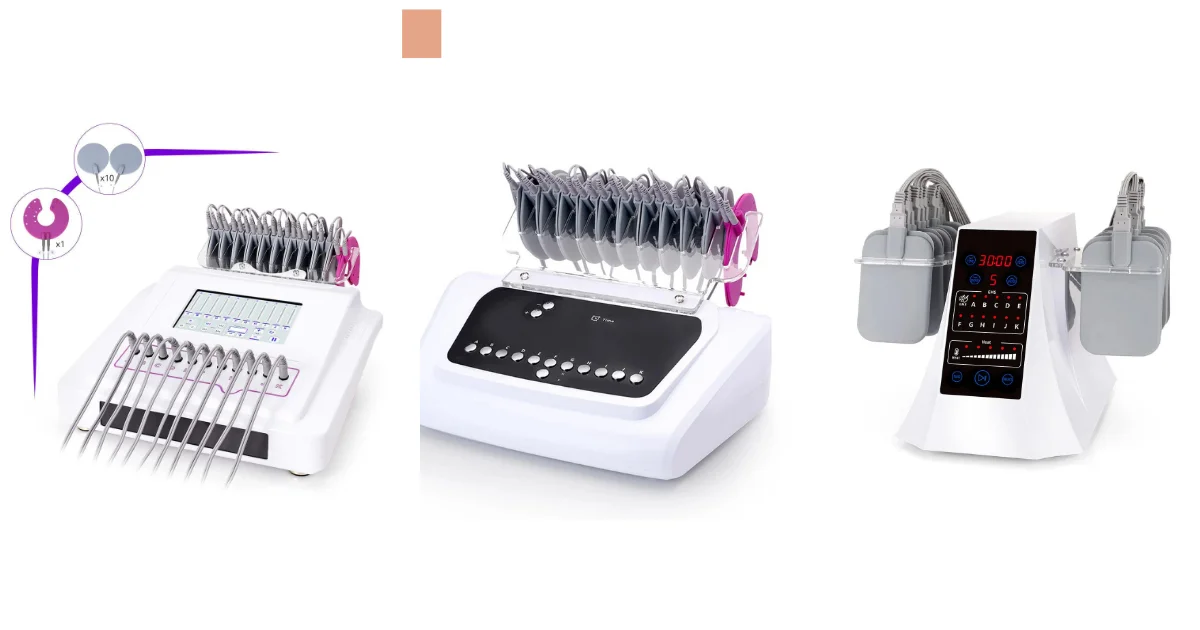Do you find it challenging to fit long workouts into your busy schedule? Or are you looking for a way to efficiently strengthen your muscles without spending hours at the gym? EMS training could be the perfect solution for you, offering a time-saving and practical approach to achieving your fitness goals.
EMS: What Is It?
The Electrical Muscle Stimulation machine offers a novel method of exercise. Because of its efficacy and promise of stress-free, high-intensity workouts, it has become increasingly popular.
All levels of fitness enthusiasts have adopted strength training, endurance improvement, and rehabilitation, as EMS has made these activities well-supported.
How Do EMS Devices Operate?
Through electrodes applied to the skin, EMS equipment transmits electrical impulses. Muscles contract in response to these impulses, simulating the natural mechanism that occurs during exercise. Two fundamental assumptions underpin the technology:
- Muscle Fibre Recruitment: During peak contractions, only around 30% of muscle fibers usually contract. By stimulating the remaining latent fibers, EMS is believed to increase muscle strength and resilience.
- Improved Nerve Conduction: EMS-stimulated repeated contractions may accelerate nerve conduction, enabling the brain to communicate with muscles more effectively. By strengthening the neuromuscular circuits, this procedure can increase the effectiveness and responsiveness of muscles.
EMS training is designed to help you achieve your fitness goals efficiently, regardless of your fitness level, passion, or busy schedule. Whether you’re a beginner or an experienced fitness enthusiast, EMS training can be tailored to your needs, with many systems allowing you to adjust the intensity of the impulses.
This customization also makes EMS training accessible to individuals with physical concerns, such as joint or back discomfort, as it is gentle on the spine and joints.
Principal Advantages of EMS
- Efficient Toning and Muscle Growth: It is nearly impossible to activate the deeper muscles with traditional exercises, but the EMS machine does just that. As a result, it promotes quicker muscular growth and more toned muscles.
- Time-efficient: Although a typical EMS session lasts roughly 20 minutes, it produces the same results as a much longer exercise, as it works a larger number of muscles. Because of this, EMS works best with hectic schedules.
- Aids in Fat Burning and Weight Loss: EMS achieves a high level of muscle activation both before and after training, resulting in a greater caloric burn. Additionally, it reduces the amount of fat in trouble spots, which helps tighten the skin and minimize the visibility of cellulite.
- Injury Recovery: The use of EMS machines in rehabilitation and injury recovery is becoming increasingly common because they work the muscles without putting undue strain on the joints. It is an excellent form of low-impact training for individuals who need to regain strength and for those recuperating from injuries.
- Improved Athletic Performance: EMS equipment can supplement more traditional training techniques. Its overall effect on the muscular system is enhanced strength, endurance, and coordination. It can also be a beneficial supplement to any effective exercise regimen.
Tips and Tricks for Making the Most of Electrical Muscle Stimulation (EMS) in Your Exercise Routine
Adding Electrical Muscle Stimulation (EMS) to your exercise regimen can help you work out more effectively by activating a greater number of muscle fibers. The following advice will help you make the most of the EMS technique if you want to include it in your workouts:
- Properly Warm Up: Before using EMS, it’s crucial to warm up, just like with regular exercise. By doing this, you can reduce the risk of harm and ensure your muscles are prepared for the forceful EMS contractions. You can use a foam roller, stretch, or engage in some gentle aerobic exercise to warm up.
- Begin Slowly: Starting slowly and progressively increasing the frequency and intensity of your sessions is crucial if you’re new to EMS. This ensures that you apply the method safely and adequately, helping to avoid muscular discomfort.
- Focus on Specific Muscle Groups: You can use EMS to target specific muscle groups, such as your biceps, glutes, or abs. Focus on the muscle groups you wish to strengthen and adjust your sessions accordingly to maximize the benefits of EMS.
- Use Proper Form: Using proper form during EMS is crucial for preventing injury and getting the best outcomes, much like with traditional exercise. Verify that you’re placing the electrodes correctly and that you’re following the directions on your EMS equipment.
- Combine with Conventional Exercise: Although EMS can be beneficial when used alone, it works even more effectively when paired with more conventional forms of exercise, such as cardio and weight training. You can achieve even better benefits by incorporating EMS into your current exercise regimen.
Conclusion
When used correctly and under the supervision of a physiotherapist, EMS machines offer a specialized method of muscle conditioning. They can help heal injuries, increase endurance, and strengthen weak muscles. They are most effective when used under a professional’s supervision, much like any other therapeutic tool.
